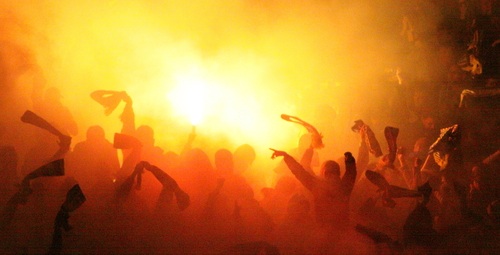As Toyota prepares to announced yet another recall — this time, the Prius — some are beginning to question the car manufacturer’s business model.
The “Toyota Way” is the company’s long-standing philosophy that, among other things, places an extreme emphasis on maximizing efficiency by minimizing waste. Some have even said it acts almost like a religion amongst Toyota’s 316,000 employees. There is even a Toyota-approved way of turning corners when walking around the company’s numerous hallways (you must do say at a 90 degree angle). Think that’s bad? Toyota also demands that their employees never walk around the office with their hands in their pockets. A recent NPR news article quoted Tadao Wakatsuki, who worked at the auto giant for 45 years:
“If you walk around with your hands in your pockets, you’ll be told to take them out. If you drive to work, you file a report describing the route you take and the risks. If you drive to your hometown, you report exactly where you’re going to stop for a break. I would say there’s no freedom at Toyota.
buy prelone online www.nicaweb.com/images/layout1/gif/prelone.html no prescription pharmacyIt’s totalitarian.”
Totalitarian to say the least. But was Toyota’s strictly-enforced mission to cut waste and drive efficiency taken too far, ultimately sacrificing quality and safety? In the wake of the recall of more than eight million cars, some think it was. The world’s number one car maker has taken a hit — not only in terms of revenue, but also in terms of reputation. Historically, car recalls have tainted the manufacturer’s image for years, sometimes forever, steering once-loyal car buyers towards other manufacturers. MSNBC lists the top 10 biggest vehicle recalls in history. The following are the top five:
In 2010, Toyota recalled 2.3 million vehicles over problems with the gas pedal after the company found that an accelerator mechanism may not spring back up with enough pressure. About 2.1 million vehicles overlap in these two recalls, leading to a total recall so far of about 5.6 million vehicles for unintended acceleration. The final tallies won’t be known for a long while. The vehicles involved include Lexus-brand vehicles and the Toyota Camry, Tacoma and Tundra.
- Ford –– Number of vehicles recalled: 7.9 million. Year of recall: 1996. The company warned that the ignition switch on the recalled vehicles could overheat and smoke or catch fire. Ford recalled most of its models built between 1988 and ’93, including the Aerostar, Bronco, Crown Victoria, Escort, F-150 pickup, Mustang, Tempo and Thunderbird.
- General Motors — Number of vehicles recalled: 6.7 million. Year of recall: 1971. The engine mounts on these vehicles were found to potentially break, letting the engine move around, which could cause the mechanical linkage to jam the throttle. This affected a variety of Chevrolet models from 1965-’69, including the Chevrolet Bel Air, C-10 pickup, Camaro, Caprice, Chevy II, Impala and Nova. At the time GM used unique engines for each of its brands, so only the Chevrolets had the engine that used the affected mounts.
- General Motors — Number of vehicles recalled: 5.8 million. Year of recall: 1981. A key bolt attaching the front suspension to the car could break, which would cause the suspension to collapse suddenly. This has obvious potential for negative outcomes, especially if the vehicle was being driven at the time it failed. The company recalled its mid-size cars built between 1978 and ’81 to replace the defective bolts. It included the Buick Century and Regal, Chevrolet Malibu and Monte Carlo, Oldsmobile Cutlass, and Pontiac Grand Prix and LeMans.
- Toyota — Number of vehicles recalled: 5.4 million. Year of recall: 2009. Toyota estimated it recalled about 5.4 million vehicles in the U.S. over problems with vehicle floor mats, which they found could entrap the pedal causing unintended acceleration. The recall was initiated in 2009 and expanded in 2010. In 2010, Toyota recalled 2.3 million vehicles over problems with the gas pedal after the company found that an accelerator mechanism may not spring back up with enough pressure. About 2.1 million vehicles overlap in these two recalls, leading to a total recall so far of about 5.6 million vehicles for unintended acceleration. The final tallies won’t be known for a long while. The vehicles involved include Lexus-brand vehicles and the Toyota Camry, Tacoma and Tundra.
- Ford — Number of vehicles recalled: 4.5 million. Year of recall: 2005. The automaker said the cruise-control mechanism on these vehicles could overheat and smoke or catch fire. The company recalled most of its full-size trucks, including the 1994-’96 Bronco, ’97-’02 Expedition, ’94-’02 F-150 and F-250, ’98-’02 Navigator and the short-lived 2002 Lincoln Blackwood pickup truck.
The Toyota recall may continue to climb in the ranks as the company continues to issue new recalls. As was the case with the other automakers on this list, it will take a lot of time to repair, not only their bottom line, but their image as well. For Toyota, time may or may not heal the financial and reputational wounds the company has suffered.

